Sealife guideInk, arms and brains: the fascinating world of cephalopodsThe marine mollusks
Last updated on 10/16/2025 at 11:50 PM
The class of cephalopods, derived from the Greek képhalé meaning head and podos meaning foot, includes some of the most astonishing marine animals. Their name perfectly illustrates their anatomy: their foot has evolved into tentacles that surround the head directly. These tentacles, with or without suckers, are used to catch prey, move around, communicate and explore their surroundings.
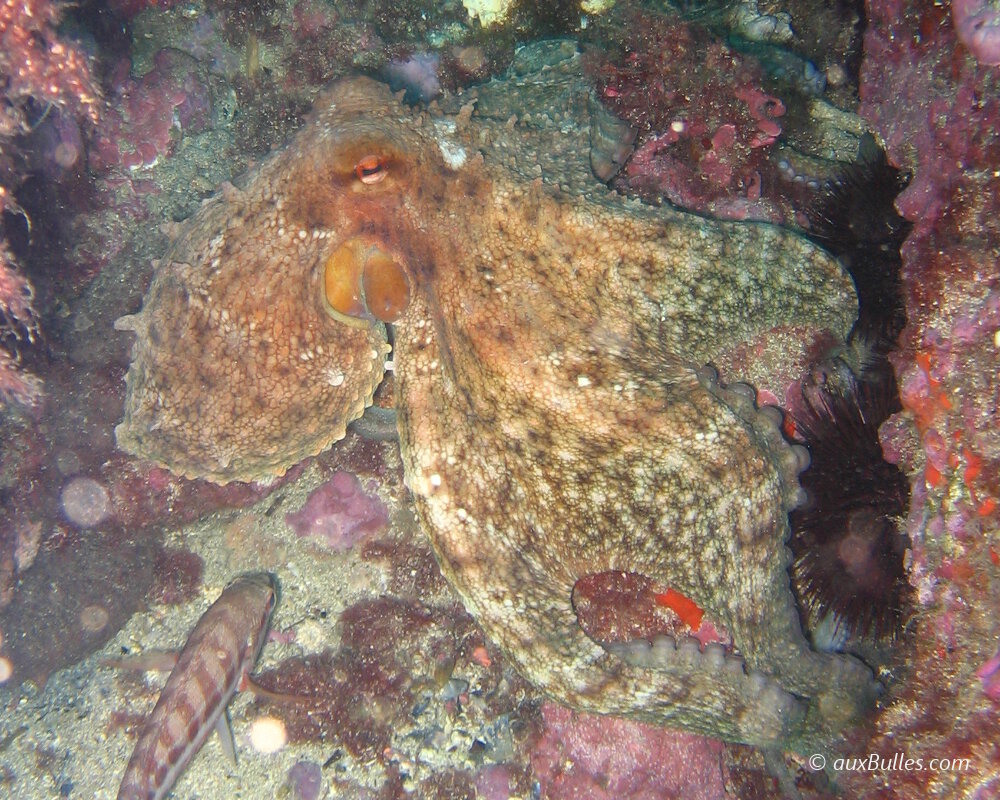
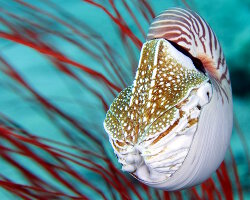
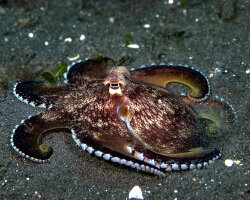
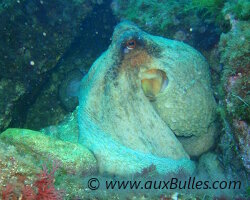
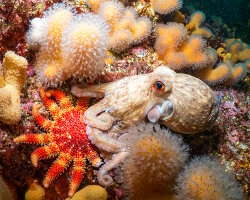
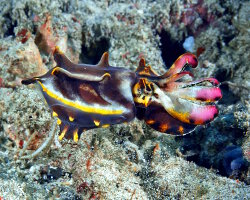
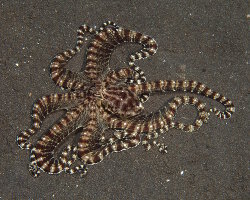











The common octopus uses camouflage to blend into its surroundings
The stars of the deep
Cephalopods are among the most highly evolved mollusks. The best-known species are the octopus, the squid and the cuttlefish. Each has fascinating characteristics:
- The octopus is a master of camouflage, able to change color and texture in an instant.
- The squid is a fast swimmer, often living in open waters.
- The cuttlefish, with its internal shell called a cuttlebone, can float or dive thanks to precise control of its buoyancy.
The geniuses of the sea
Unlike many other invertebrates, cephalopods have a complex brain and a highly developed nervous system. This gives them real learning and memory abilities.
They can solve problems, recognize shapes, manipulate objects such as opening jars and even escape from aquariums ! The common octopus, for example, learns by observing and can adapt its behavior to different situations.
A natural jet propulsion system
To move around, cephalopods have developed an ingenious form of locomotion: jet propulsion. By expelling water contained in their mantle cavity through a siphon located between the head and the body, they propel themselves quickly in the opposite direction, much like a tiny underwater jet. This technique allows them to flee predators or move gracefully in all directions.
Masters of camouflage and deception
The common octopus can blend into its surroundings by instantly changing the color, brightness and even texture of its skin, thanks to specialized cells called chromatophores. This ability allows it to hunt discreetly or disappear from sight when threatened.
And in the face of immediate danger, cephalopods have another formidable weapon: they release a cloud of black ink that confuses the predator, creating a smoke screen that allows them to vanish into the depths.
Marvels of adaptation
Cephalopods perfectly illustrate the richness and creativity of marine life. Agile predators, clever thinkers and masters of disguise, they continue to fascinate both scientists and the general public.
Studying these creatures means diving into a world where intelligence, evolution and beauty come together in the heart of the oceans.
Discover marine cephalopods

Chambered nautilus
(Nautilus pompilius)
(Nautilus pompilius)

Coconut octopus
(Amphioctopus marginatus)
(Amphioctopus marginatus)

Common octopus
(Octopus vulgaris)
(Octopus vulgaris)

Curled octopus
(Eledone cirrhosa)
(Eledone cirrhosa)

Flamboyant cuttlefish
(Metasepia pfefferi)
(Metasepia pfefferi)

Mimic octopus
(Thaumoctopus mimicus)
(Thaumoctopus mimicus)

North Pacific giant octopus
(Enteroctopus dofleini)
(Enteroctopus dofleini)

White-spotted octopus
(Callistoctopus macropus)
(Callistoctopus macropus)
Discover marine mollusks

Abe's polycera nudibranch
(Polycera abei)
(Polycera abei)

Adorned stiliger
(Stiliger ornatus)
(Stiliger ornatus)

Hooded nudibranch
(Melibe leonina)
(Melibe leonina)

Indian nudibranch
(Caloria indica)
(Caloria indica)

Lined chiton
(Tonicella lineata)
(Tonicella lineata)

Noble pen shell
(Pinna nobilis)
(Pinna nobilis)

Pustulose wart slug
(Phyllidiella pustulosa)
(Phyllidiella pustulosa)

Tiger cowrie
(Cypraea tigris)
(Cypraea tigris)
Our latestUpdates

Friday, November 28th 2025
Disney Hollywood Studios, from Star Wars to Toy Story
Dive into the magical world of Disney's Hollywood Studios: Star Wars and Toy Story attractions and shows for the whole family.

Wednesday, November 19th 2025
Tenerife island
Tenerife, the largest of the Canary islands, is a volcanic gem in the Atlantic ocean. It boasts an incredible variety of landscapes, from golden or black sand beaches to the subtropical forests of the Anaga mountains and the majestic Teide volcano, Spain's highest peak. With its picturesque villages, rich local culture and countless outdoor activities, Tenerife is a perfect destination for every type of traveler.

Saturday, November 15th 2025
Batz island
Located in the English Channel off the northern coast of Brittany, just a few kilometers from the town of Roscoff, Batz island is a true little haven of peace where you can enjoy its wild landscapes, unspoiled beaches and historical heritage.
Photo of the Day

Poisson perroquet à bosse
(Bolbometopon muricatum)
(Bolbometopon muricatum)
